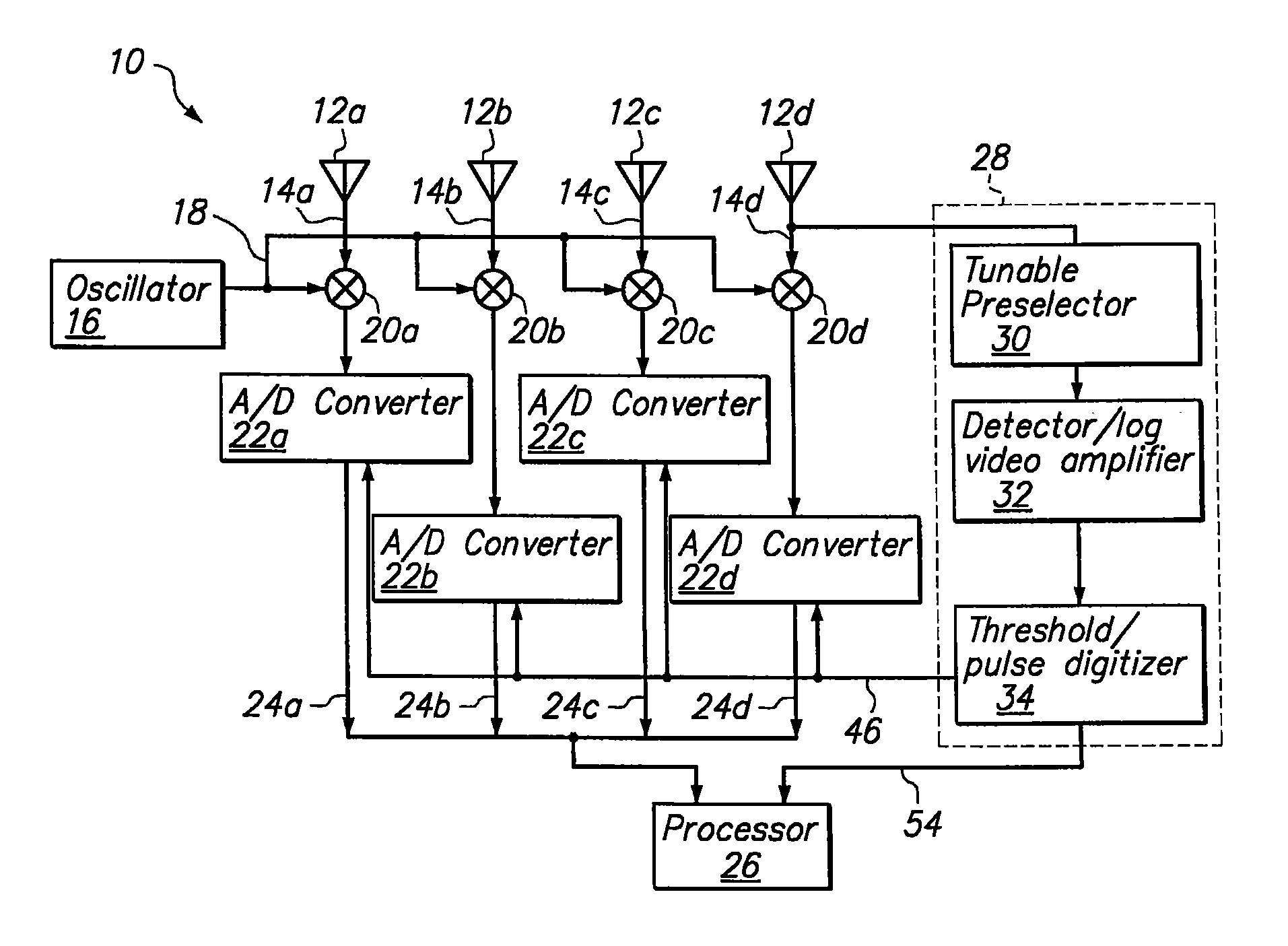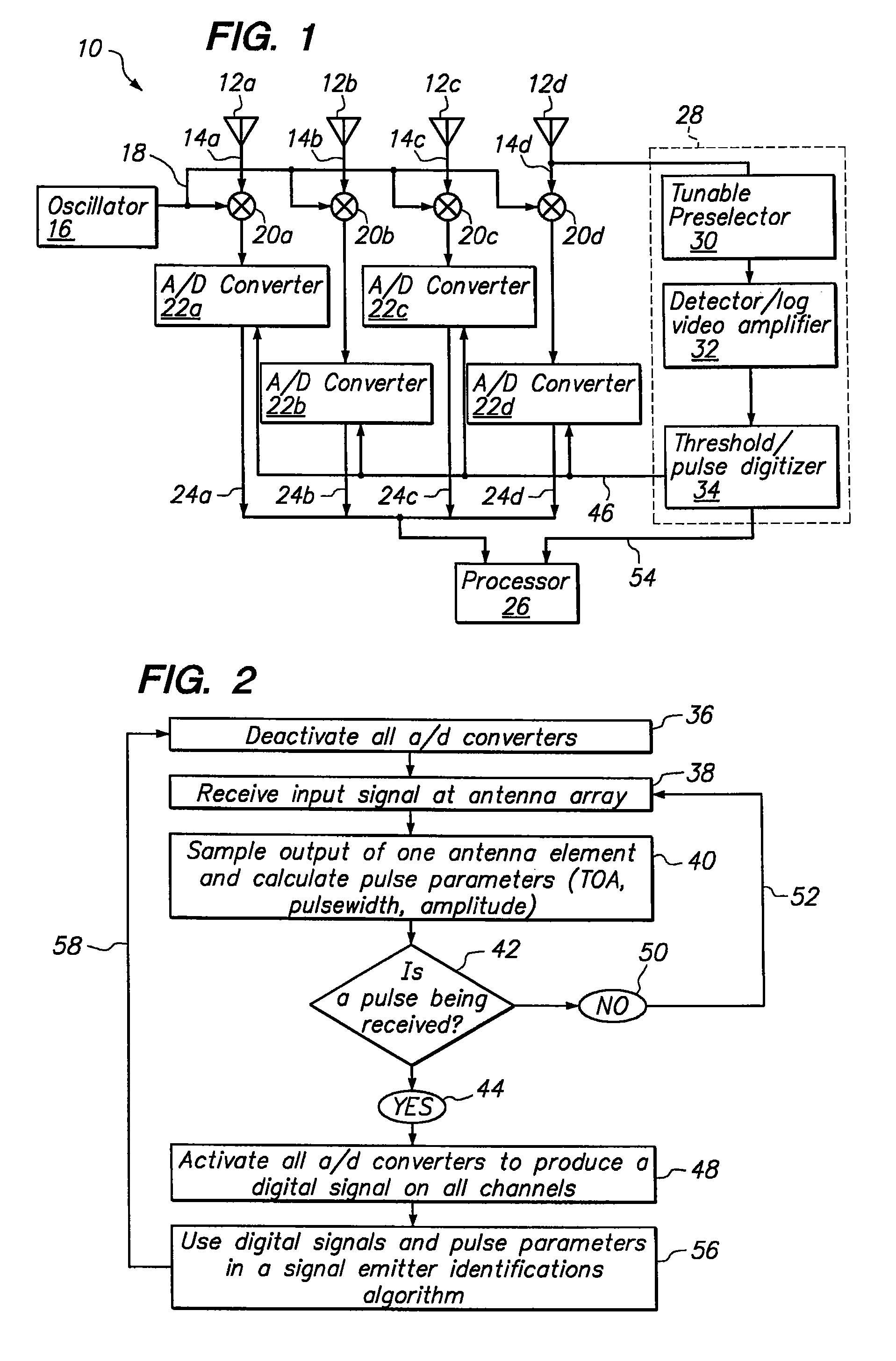Hybrid radar receiver
a receiver and hybrid technology, applied in the field of hybrid radar receivers, can solve the problem that digital signals are not produced on each channel, and achieve the effect of reducing processor load
- Summary
- Abstract
- Description
- Claims
- Application Information
AI Technical Summary
Benefits of technology
Problems solved by technology
Method used
Image
Examples
Embodiment Construction
[0014]A hybrid radar receiver for identifying a signal emitter (e.g. target) is shown in FIG. 1 and is generally designated 10. As shown, the system 10 includes an antenna array having a plurality of antenna elements 12a-d. Although four antenna elements 12 are shown for the antenna array, it is to be appreciated that as few as two, and as many elements 12 as desired can be used for the receiver 10. It is further shown that each antenna element 12a-d produces an analog signal output on a respective channel 14a-d. A common local oscillator 16 is provided to mix a common oscillator signal 18 with the data on each channel 14a-d at respective mixing circuits 20a-d, as shown. This mixing is typically performed to down convert each signal from a respective antenna element 12a-d to a preselected intermediate frequency, or in some cases, to baseband.
[0015]FIG. 1 further shows that the receiver 10 includes an activatable analog-to-digital (A / D) converter 22a-d for each channel 14a-d. Digital...
PUM
 Login to View More
Login to View More Abstract
Description
Claims
Application Information
 Login to View More
Login to View More - R&D
- Intellectual Property
- Life Sciences
- Materials
- Tech Scout
- Unparalleled Data Quality
- Higher Quality Content
- 60% Fewer Hallucinations
Browse by: Latest US Patents, China's latest patents, Technical Efficacy Thesaurus, Application Domain, Technology Topic, Popular Technical Reports.
© 2025 PatSnap. All rights reserved.Legal|Privacy policy|Modern Slavery Act Transparency Statement|Sitemap|About US| Contact US: help@patsnap.com


